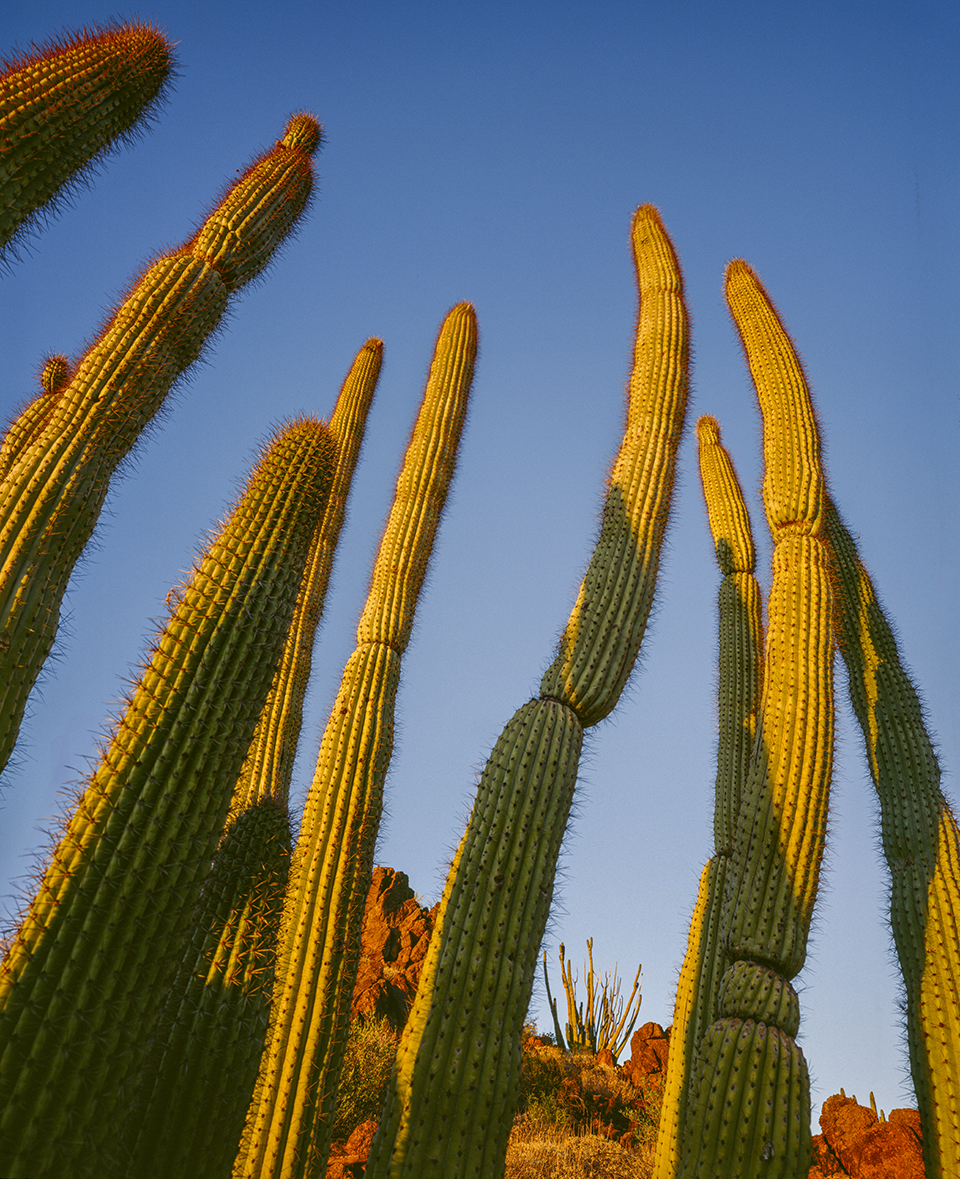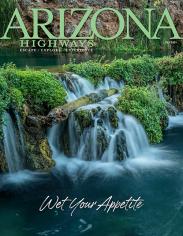Editor’s Note: Although we’re best known for our photography, we’ve also featured some wonderful writers in the past 100 years, including Joyce Rockwood, Jonreed Lauritzen, Charles Bowden and Craig Childs. Another was Nancy Newhall, who was the curator of photography at the Museum of Modern Art in the early 1940s. Later, she wrote stories about photographers and worked on photography books with Paul Strand, Edward Weston and Ansel Adams. In addition, she collaborated with Mr. Adams on several stories for us.
“When I think of Nancy Newhall, I think of sunlight,” Mr. Adams said. “Even on the drabbest day or enveloped with the occasional sour and empty moments of life, Nancy always triumphed over the environment and the mood. She had a compelling internal luminance which glowed in all her thoughts, her writing and her personality. It is as difficult to describe Nancy as it is to tell about the wind blowing from the sea, the sound of falling water, the subtle moods of greeting or parting or the sudden shining revelation of a flower or a mountain.”
Ms. Newhall died in 1974 while rafting the Snake River with her husband, Beaumont, who was the first curator of photography at the George Eastman House in Rochester, New York.
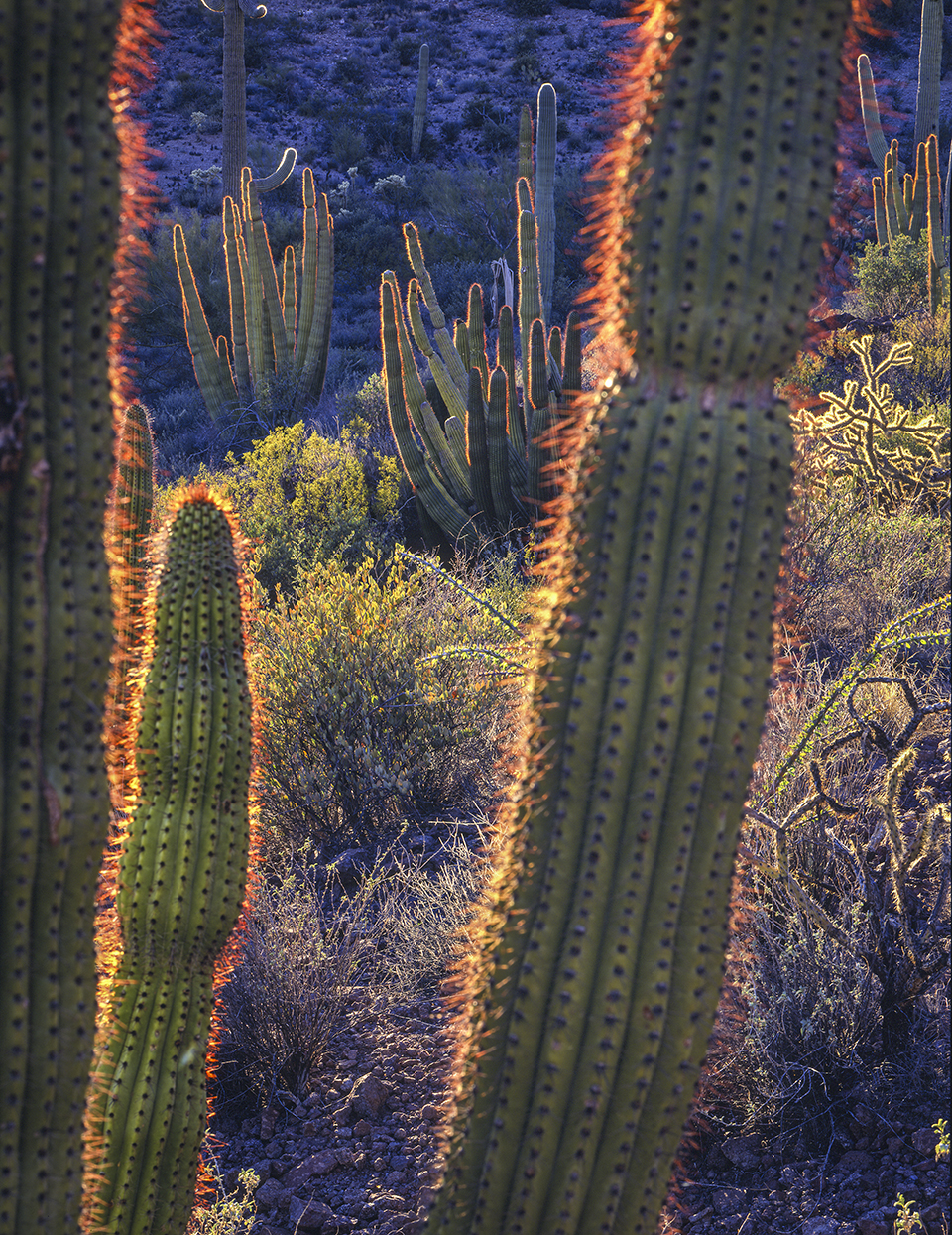
From the copper town of Ajo, the highway runs to Sonoyta and the Gulf of California. It is a fast road, soaring up through mountain notches and down across wide valleys where chollas glimmer and saguaros stipple the slopes. Ahead, the mountains of Mexico are rising. Fishermen bound for the bright waters and big fish of the Gulf, and tourists intent on a strange land, flash down the highway, hardly seeing the sign that reads Organ Pipe Cactus National Monument, or the flag fluttering over a small building some 15 miles farther. Then, from the desert horizons, a few low adobes close in: Sonoyta and the border.
If asked, the tourists and fishermen would say they had seen nothing but another large cactus patch, and why all the shouting about a national monument? But there are other travelers, often with a dusty, sun-faded and delighted look, whose cars are laden with sleeping bags, water bags and cookstoves, and who move down this highway like snails. These are desert lovers, and they are about to enter paradise. They turn off onto little roads, almost imperceptible among the saguaro colonnades, and vanish.
Morning glitters in the desert. Sunlight is under everything, and shadows stretch ankle deep behind. Seen against the east, everything is a sparkling shadow, even the low fuzzy thorns and the gravel in the washes.
Beside the highway, a few yards back in the low forest, stand two crosses. Paper wreaths hang on them. Bottles that once held holy water lie empty; from other bottles the flowers have blown out and dried. These are not graves, but places where the souls of a young Indian and his wife departed, and still sacred to their relatives. Faithfully, to these remote crosses, every year on All Souls, new paper wreaths, new bottles of holy water and real flowers, new candles to burn in the desert air will be brought, so long as any living person shall remember them.
Behind the bright April morning, you feel a July night, perhaps with coolness descending from the luminous sky upon the still-hot earth, perhaps black with thunder and engulfing rain. What appeared in the tunnel of headlights? A cow, staring and stupefied? Another car, swerving? After the crash and splintering, were there others who carried the dying away from the road by flashlight or the glare of headlights among the saguaros? Or did they crawl alone? The silver forest surrounds them silently.
Outlined by the sun in their new spines, the saguaros point upward; the chollas, luminous as thistledown, seem to float over the hills. Far off, under a pure sky, distances of mountains recede into infinity. And the clouds, which at dawn were wings unfolding from the valleys, are rising into wisps and aureoles of blinding light.
The flame of the cookfire is dusky, the smell of bacon and coffee delicious and small, human and transient in this gigantic air. You realize that the sky does not begin at rooftop or treetop or mountaintop — it begins at your feet. You are walking in air. Space begins at your forehead, and there is nothing between you and the sun.
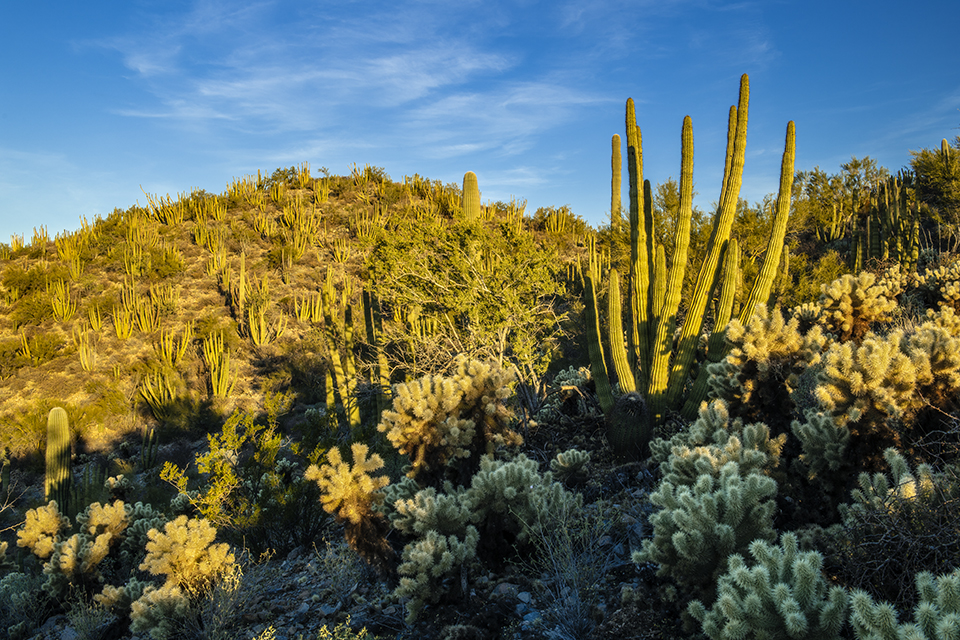
Around you, land held by the monument rises to the peaks and descends their farther slopes. To protect a desert, you must protect its peaks and see that nothing impedes the vital flow of its scanty waters. Build an unwise highway across a desert slope, and it will act like a tourniquet; above it, the desert, gorged with water, will turn green and rot, while below, gray and shrunken, the desert will wither away. Here the little roads lie as light as paths on hill and wash. Melting snow can seep under them, and flash floods from the thunderstorms roar across them.
The stubborn miracle of the arboreal desert begins to engross you. In the dry mountains of Mexico, under the tropic sun, not only water but the breath of water had to be conserved. Leaves exhale moisture; plants learned to drop their leaves in the searing heat and even to live without leaves. The ancestor of what, in lands of rainfall, became the rose, here spread a net of roots to catch the most fleeting shower, swelled its stalk into a reservoir, and coated itself with spines. The desert forest took forms unique to the center of this hemisphere, and slowly marched up the mountain slopes into Arizona.
A strange and exquisite community, the thorns and cactuses live in silence. The ocotillos shoot up shimmering wands tipped in the spring with flames of flowers. In the heat they drop their leaves and wait with naked thorns for rain. The paloverdes, gray-green glimmering little trees, also drop their leaves. In the droughts, they are mists of thorns; in April, they blossom into clouds of gold.
Austere, uncanny among the delicate thorns, the cactuses are curiously diverse and individual. The sluggish barrels, lying huge along the earth, point mostly to the hottest part of noon. The prickly pears, their paddles evolving and balancing one from another like acrobats, seem from a distance to twinkle. The chollas are a peculiar kindred, hiding their flowers in spiky calyxes; the staghorns branching into chili red, pale jade, ripe yellow; the jumping chollas frosted with sharp bright spines, their pods ready to catch at a hair or a thread.
The organ pipe and the senita grow like families, in clumps of fluted columns often twice as tall as a man and more. Nowhere else north of Mexico will you find them. Down the wash, among the scrubby thorns, you may find, if you search diligently, a woody stalk that looks like a dead serpent dried by the sun. From that dead twig, in a matter of hours, a living tip shoots up. With the last sunlight, the swelling bud will open into a glow of satin around pistils and stamens like a jeweled monstrance-flower worth a fiesta, the night-blooming cereus, Queen of the Night, filling the
darkness with perfume and dying with the morning. And overhead, always on the slopes and hilltops, loom the saguaros, the giant symbols of this land.
Walking in this silent fantasy, you learn to keep a sharp eye on the ground. The brown burs dropped by the chollas can pierce a boot sole. And in the shade and light, seldom seen but never impossible, there may be the living pattern of a snake.
You stop with foot in air; there is something between you and the earth. Mist, from this dry soil? Or some after-ghost of brightness in your eyes? It is a puff of flowers, bound to the earth by stems like threads. And this circlet of bright lace the size of your palm is a mat of daisies. A host of almost invisible bells and grasses is dancing an inch or less above the gravel between the huge, harsh cactuses soaring into the sun.
Noon in the desert is a vast blaze overhead and a hard glare below. You are shut in by distances of light. You walk in the focus of the sun’s rays. You are clothed in sun; sun glows in your blood, until even your bones are incandescent.
Thorn and spine glisten around you. Crowned by glittering spikes, the saguaros stand in pools of shadow that might cool a mouse or a lizard but no larger living thing. The paloverdes glimmer like glacier water, but their mists of thorns do not so much cut off the light as enmesh and soften it. The gold of the flowering brittlebush sears your eyes.
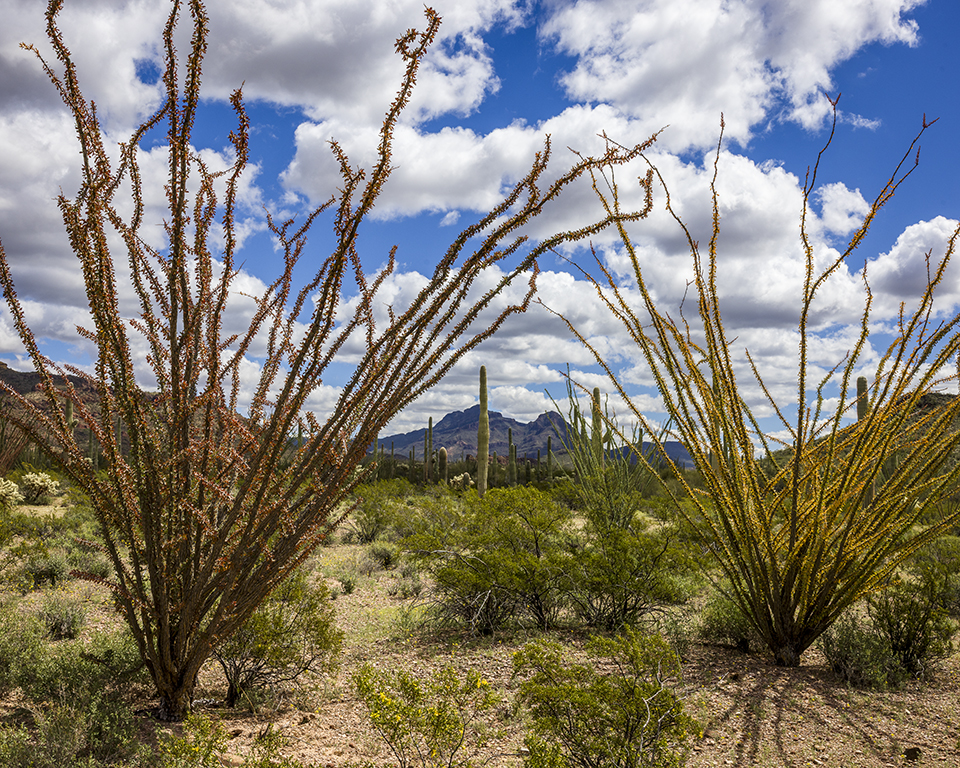
You feel in your own body why the desert wears gray, and why it blooms with such vital brilliance. Nor do you any longer need a scientific explanation of desert varnish.
You pass through groves of chollas spectral as the illusion of an orchard blossoming in hell. The near mountains are shapes of opalescent coral without depth or substance; the far peaks of Ajo and Mexico pierce the sky with turquoise. There is no shade; there is no place to look.
Then the little road runs down a hollow in the hills and dumps you into Quitobaquito. You can take in all of Quitobaquito in a single glance — a pool, a few trees, a shack, a tent, some moldering adobes and a barbed wire fence. It is just a desert water hole, and it has never been much more. But here, 80 years before the Pilgrims rowed to the cold autumnal shores of Plymouth, Díaz may have passed on the exploration that took him to the Colorado River. Here, at the end of the 17th century, the Jesuit Father Eusebio Kino came riding west from the chain of missions he had founded; excited by a string of 20 blue seashells, he came to ask the Indians if there were not passage to California by land as well as by sea. Here in 1776, while along the Atlantic 13 colonies fought for independence, De Anza rested on his return from the Pacific; in California, on the shores of a great bay, he had founded a mission dedicated to San Francisco.
Here the forty-niners slaked their thirst and pushed on over the torturous mountains and the vast dry plains, and died until by their skeletons you could follow El Camino del Diablo — the Devil’s Highway. And here wagonloads of ore from these mountains halted on their creaking journey down to the sea and the waiting ships. Two mongrel dogs bark at you briefly, but at first you hardly see the tent or the dark faces in the shade. Like all the white men who have come here thirsty and half-blinded, you see only the water and the green, hear only the water and the leaves.
The pool is cloudy, like many springs here. But it reflects the sky, rocks the rushes growing in it, and laps sparkling water weeds. That louder rippling comes from the rivulet rushing past the ruined adobes from the springs above. A huge old cottonwood leans over the water; others push up the sky of noon to let you walk under heights of rustling coolness. And in April the gnarled, dead-looking mesquites around such pools are hanging out fronds of a green like fire.
Gradually you begin to see in the shade. The dogs are quiet, but a turkey cock still gobbles and swells as you approach. A rooster eyes you acridly, and his hen clucks a warning to her chicks. A fat white duck waggles disapprovingly toward the water. No fence is needed; the desert sun herds living things toward shade and water.
A half-grown Tohono O’odham boy darts out of the tent, snatches up the protesting duck and wears her upside-down on his head as he runs and dances, looking to see if you think he is funny too. A woman, vast and maternal, comes out to empty a washtub. A lean old man in a wide hat shakes his head when you ask to photograph his family. A photograph is magic; it takes from a man his shadow and could be used to work him evil.
Across the brook, through the ruined wall of one of the adobes, you can see a rusted bed. A man died there. His family pierced the wall to let his spirit pass, and then, in fear of his envious returning ghost, abandoned the house.
You remember how these tenacious, peaceful Tohono O’odham could live in deserts where no other dared linger. How they hoarded water in pools like this through the thunderous summer, and planted their corn and beans where floods had soaked the earth. How in the bright winter they moved up beside the mountain springs and went hunting. How each family had a grove of saguaros and in the July blaze knocked from their tips the split red fruit, to grind the black seeds into meal and make from the scarlet pulp both jam and wine for the rainmaking ceremony; how from the mescal they took huge buds to roast like giant artichokes, and fiber to twirl into string; from devil’s claw a black strand to weave with yucca in their baskets. You think of the long incantations to bring rain and ward off evil, of the constant charms and prayers to ensure the narrow margin between life and famine, and you no longer wonder that by remote and lonely pools the Tohono O’odham still believe in magic.

Springs in the desert are where you find them, and earth soaked by the floods lies where the floods sink. Why should a pool be separated by a fence from the field it waters, and one be called America and the other Mexico? Yet those four strands of barbed wire down there, a fence for cattle, not men, mark the boundary not only between two nations, the United States and Mexico, but between two philosophies. The Mexicans do not believe in killing diseased cattle; plague may infect whole herds and from the herds whole economies. But to the Mexicans, death is fated; it comes to all creatures, and mortals should neither hasten nor delay it. Horrified, the Americans have put barbed wire between themselves and contamination. And the Tohono O’odham, inhabitants with a tenure older than nations, continue to live by the pool and plant in the field as they did for numberless generations before the first white men came like comets across the blazing hills.
Grazing is harmful to desert ecology, and no cattle should be allowed within the monument. But beside a deserted shack and withered ramada, a windmill still creaks in the hot light, pumping gushes of cool water into a trough; wildflowers grow in the overflow. Through the unbarred gate, the cattle wander in to drink — wild and shy, with rough red coats and white furred faces.
Suddenly, as if a bell sounded in the desert silence, you look up. The air has changed; it is cooler. The sun once more is infinite light, instead of a burning star overhead. Shadows are sculptural again, and a man may stand in them. Once more the mountains recede. To the west, they stand steel cut against the afternoon, and toward them undulates a marvelous glimmer — the feathery bells and grasses that were almost invisible at noon are now illuminated by the sun.
Up in the hills, the flowers are now pure light and color — the silken primroses, the spires of lupine, the bright poppies, the winged wild hyacinths. Over them the chollas glow and the saguaros loom aureoled. On cactus tips, flowers more brilliant than the rose are opening. Among the red cliffs of the Puerto Blancos, the Dripping Spring moistens a hillside now in shadow. From its cave in rock like blown seafoam, you descend through ferns and star-like clouds of daisies.
Shadows stretch longer and longer from the peaks. From the twilight, you watch the eastern crests turn gold, then scarlet, rose and amethyst. Over their jagged edge, in the clear night, the moon is seen to be a pallid sphere.
If you are wise, you have already made camp, and not in a grove of jumping chollas. Easy to avoid by day, at night they crowd close, invisible and eager torturers. The desert in darkness seems lifted up. The cookfire gleams. The moon becomes a presence, then a glittering power in the night. If clouds veil the moon, a luminous softness covers you. In the moon’s dark phases, the immense universe seems to wheel close to the Earth’s rim, and all night long the bright stars pierce your sleep.
Then light on your eyelids presses you awake. The winged clouds are on fire from the unrisen sun. Under their light the desert becomes visible, unearthly in the transparent cool. Then through a low notch among the peaks breaks the first blaze. The red crags glow. Night clings, paling, to your back, until once more day is limitless, and you are walking on the desert in the sky.
